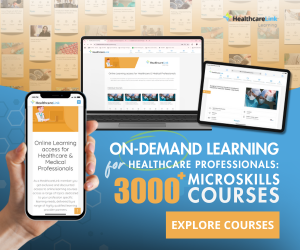Acute Medicine | Palliative care | Managing excessive respiratory secretions



Managing excessive respiratory secretions
Session overview
Description
This session looks at excessive respiratory secretions in the last days of life; what causes them as well as an integrated approach to their management and their impact on those close to the patient.
This session was reviewed by Richard Kitchen and last updated in June 2021.
Learning objectives
By the end of this session you will be able to:
- recognise excessive respiratory secretions in the last days of life and their underlying cause
- discuss the impact of excessive respiratory secretions on the family, friends and professionals
- list the main drugs used in symptom management of excessive respiratory secretions, their efficacy and side-effects
- outline an effective approach to managing the noise of excessive respiratory secretions and providing support for family and observers
- assess your confidence around identifying and managing the symptoms of excessive respiratory secretions
Prerequisites
Before commencing this session you should:
- Recognising the dying phase, last days of life and verifying death (215-0423a).
- Managing distress during the dying phase (215-0426).
Understanding excessive respiratory secretions is important. It is the harbinger, or signal of the onset of death: that unpleasant noisy breathing which occurs in up to 90% of patients within the last day or two of life, and occurs only when the patient has become semi-conscious or unconscious.
The noise is described vividly by Dickens and other authors, using words such as 'gurgling', 'choking' and 'death rattle'. Frequently accompanied by the drooling of fluid from the mouth, it is hardly surprising that the word 'drowning' is often used by families.
Many observers, including experienced nurses and doctors, describe it as a horrible sound, believing it to be particularly upsetting for families, friends and other patients. We have met sons and daughters who remember, often with distress, the noise of excessive respiratory secretions many years later.
This session gives new insights into how to handle the noise and provide supportive communication with the family. It looks at the evidence base underpinning current management and gives an opportunity to look at excessive respiratory secretions afresh, and challenge some aspects of traditional practice.
- Recruiting & retaining GPs for your practice
- Posted By HealthcareLink e-Learning
- Posted Date: 2025-03-11
- Location:Online
- This 15mins quick course will give you tips and guides on how to go about recruiting and retaining G...
- Anaesthesia Fundamentals | Physiology | Pulmonary ...
- Posted By eIntegrity Healthcare e-Learning
- Posted Date: 2025-03-11
- Location:Online
- This session provides an insight into the anatomy, physiology and regulation of pulmonary blood flow and its uneven distribution.
- Anaesthesia Fundamentals | Physiology | Coronary C...
- Posted By eIntegrity Healthcare e-Learning
- Posted Date: 2025-03-11
- Location:Online
- This session provides an overview of the functional anatomy and physiology of the coronary circulation during the cardiac cycle. It describes the different phases and regulatory mechanisms of coronary blood flow.
- Anaesthesia Fundamentals | Physiology | Peripheral...
- Posted By eIntegrity Healthcare e-Learning
- Posted Date: 2025-03-11
- Location:Online
- This session outlines the physiology of the vasculature, describes the role of the vascular endothelium and the determinants of vascular resistance, explains how the microvascular forces affect exchange of fluids, nutrients and metabolites and describes t
- Anaesthesia Fundamentals | Physiology | Control of...
- Posted By eIntegrity Healthcare e-Learning
- Posted Date: 2025-03-11
- Location:Online
- This session describes the determinants of systemic blood pressure, including physical, neurological, vasomotor and hormonal regulation, and the role of the kidney in blood pressure control.




